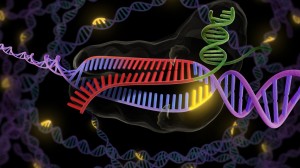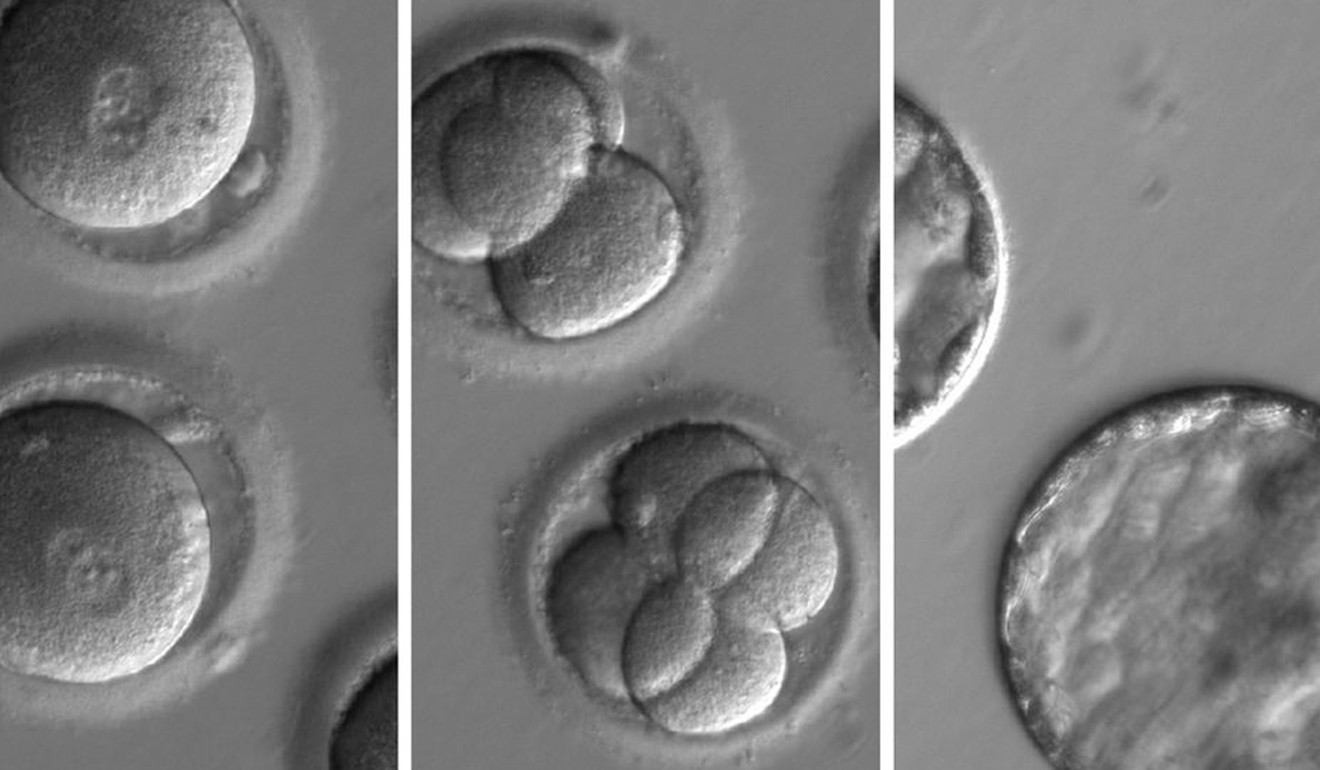Scientists urge revamped regulations for genetic engineering

Are new techniques for genetic modification being used to escape some of the regulatory oversight imposed on conventional genetic engineering techniques for the past several decades?
That’s the suggestion in a recent New York Times piece by Andrew Pollack that focused chiefly on a genetically modified grass being developed by the Scotts Miracle-Gro Company. It quoted Scotts chief executive Jim Hagedorn as telling investors explicitly “If you take genetic material from a plant and it’s not considered a pest, and you don’t use a transformation technology that would sort of violate the rules, there’s a bunch of stuff you can do that at least technically is unregulated.”
Scotts’ relationship with regulators has not always been so smooth. It had a calamitous previous experience with conventional genetic modification in 2003 when a genetically engineered grass it was then developing escaped from a test plot, which is forbidden by regulations governing traditional biotechnology methods for genetic modification.
Mosquitoes' stinging bites are irritating and itchy, but they can also be dangerous. From malaria, to dengue, to yellow fever, to Zika, mosquito-borne illnesses affect billions of people worldwide each year, sometimes causing debilitating symptoms.
One strategy that experts use to combat these diseases is reducing mosquito populations. But pesticides carry risks to human health, and prolonged use of these poisons can lead to resistance in mosquitoes, making the toxins less likely to work.
However, another solution that tackles the problem at a genetic level may soon become a reality.
Scientists are genetically modifying mosquitos that act as vectors — organisms that transmit an infectious agent — to disrupt the insects' cycles of breeding and infection through traits that the mosquitoes would then pass on to future generations.
One of the most powerful gene-editing tools in scientists' arsenal is CRISPR technology, which targets short, repeating strands of DNA using a protein known as Cas9 to snip through DNA strands. CRISPR, pronounced "crisper," is an acronym for "clustered regularly interspaced short palindromic repeat," which describes the type of DNA sequences that the technique addresses.
By harnessing CRISPR, researchers have been able to edit genes in mice, fruit flies and even human cells with unprecedented precision. And recently, scientists altered the genomes of Aedes aegypti mosquitoes so that the insects' own cells would produce the Cas9 protein required for CRISPR techniques. This allowed the scientists to perform highly targeted genetic surgery.
Their first efforts focused on disrupting genes that controlled physical features in the insect, creating features that would be highly visible and easy to track.
The white eyes in this Aedes aegypti mosquito resulted from edits to its genome, done with the help of a protein produced in the insect's cells.
The researchers tweaked the mosquitoes' genomes to alter traits linked to blood feeding, flight and vision, producing mosquitoes that had white eyes instead of black ones, malformed wings or a proboscis that could not draw blood. Other genetic alterations to the mosquitoes resulted in yellow body color and extra eyes or limbs, the study authors reported.
By comparison, mutations that were introduced in strains of mosquitoes that did not produce the Cas9 protein were less successful, and the mosquitoes were less likely to survive, the researchers discovered.
Genetically altering mosquitoes to produce the Cas9 protein — a key component of CRISPR gene editing — within their own cells lays the groundwork for scientists to modify specific areas of the mosquitoes' genomes more efficiently, according to the study. This could help researchers chart a quicker path toward DNA-driven strategies for managing how mosquitoes feed and breed, to bring populations of disease-spreading insects under control, the study authors concluded.
The findings were published online Nov. 14 in the journal Proceedings of the National Academy of Sciences.
Curing the incurable? US scientists unveil powerful new tools to fix genetic faults

US scientists on Wednesday unveiled two new molecular editing tools designed to fix mutations that cause most human genetic diseases, some of which have no known treatment.
One technique, by David Liu of Harvard University and the Broad Institute of MIT, offers a highly precise way to fix single-letter mistakes in genes, which are stretches of deoxyribonucleic acid or DNA.
A second, by Broad Institute molecular biologist Feng Zhang, focuses on editing ribonucleic acid or RNA, which carries the genetic instructions to make proteins, without altering DNA.
Both techniques build off of the game-changing CRISPR-Cas9 gene editing tool, a type of molecular scissors for trimming unwanted parts of the human genome to replace with new stretches of DNA. The genome consists of six billion DNA letters, or chemical bases.
In a paper published on Wednesday in the journal Nature, Liu and colleagues build on his pioneering work called base editing. Unlike CRISPR, which causes breaks in DNA, base editing chemically corrects single-letter errors in DNA.
“CRISPR is like scissors, and base editors are like pencils,” Liu said in a statement.
Like a cut-and-paste tool for DNA, gene editing is pushing back the boundaries of science
Base editing tinkers with DNA’s four chemical bases, adenine (A), cytosine (C), guanine (G) and thymine (T). It takes two bases to form base pairs which make up rungs in the spiral DNA ladder, and they follow specific rules – C pairs with G, and T pairs with A.
Single-letter mistakes, called point mutations, can give rise to genetic diseases. Last year, Liu’s team described a base editor that could change CG base pairs into AT pairs.
In a paper published in September, researchers at Sun Yat-sen University in China described using that system to correct a faulty gene that causes the blood disorder called beta-thalassaemia in human embryos.
For the latest study, Liu’s lab researchers engineered an entirely new enzyme that could convert an AT to a GC pair, something that had previously not been possible.
The research goal was tantalising because about half of the 32,000 disease-associated point mutations are caused when an GC base pair mistakenly becomes an AT in a specific spot in the genome.
Gene editing on human embryo used for the first time in the US
“They came up with an enzyme that is very specific and very effective,” said Dana Carroll, a gene-editing expert at the University of Utah who was not involved in the research. “It really was a heroic effort, and very beautifully done.”
Carroll said gene editing enzymes would be very useful tools for both research and practical studies in medicine and possibly agriculture.
Since base editing does not cause a break in the DNA, it might produce more predictable results than CRISPR, which can cause “slightly unpredictable” insertions or deletions in the genetic code, Professor Robin Lovell-Badge of the Francis Crick Institute in London said in an email.
In the second study published in Science, Zhang, an early developer of CRISPR-Cas9 technology, created a new version of CRISPR that can edit RNA, which could help scientists make precise changes in cells at different points in development.
Can gene editing cure viruses and cancer? A Hong Kong expert separates fact from fiction
David Cox, a graduate student in Zhang’s lab and a lead author on the study, said the RNA editing system, called REPAIR, can “fix mutations without tampering with the genome.” However, the changes are not permanent because RNA degrades over time.
Carroll said both editing systems offer the chance to correct specific disease mutations, either in DNA or messenger RNA. But neither is ready for human trials yet.
“There are a number of hurdles that need to be overcome, including proving efficiency, specificity and safety,” he said. The scientists also need to develop ways to deliver the editing systems into the correct cells in the body.




0 comments: